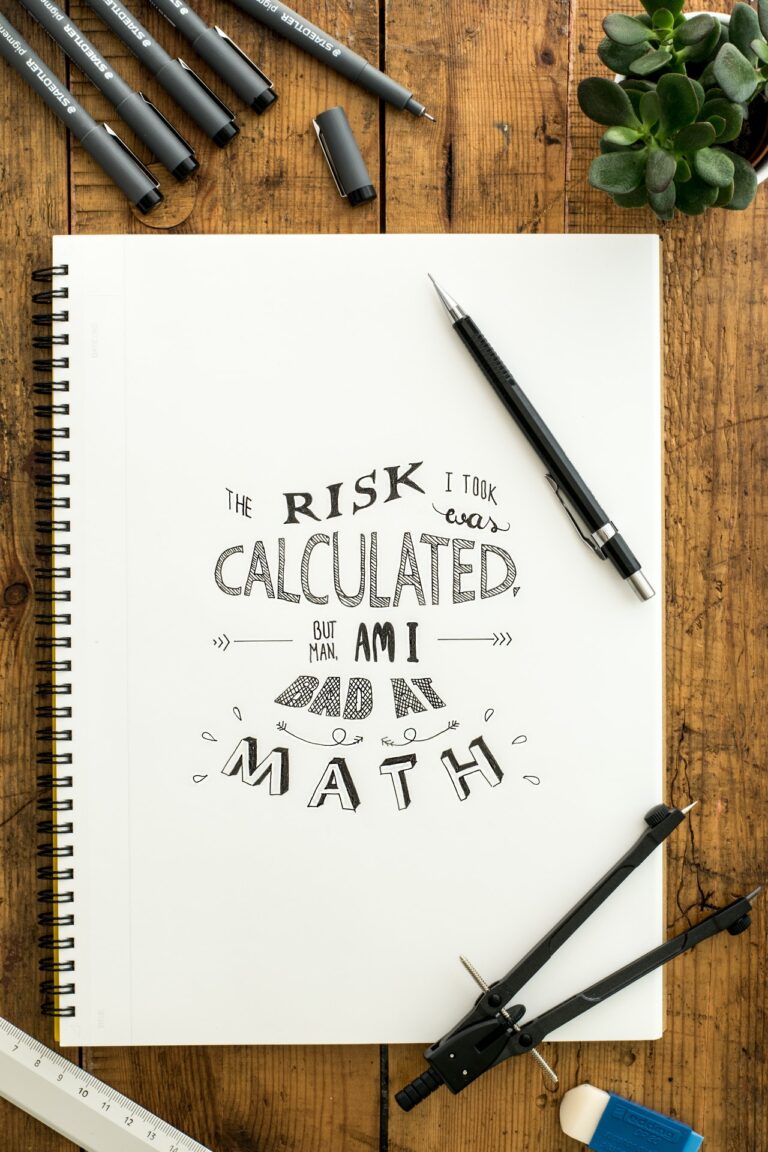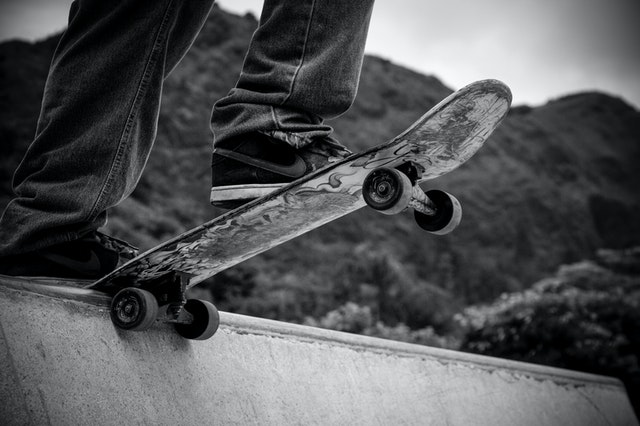Together, we are all experiencing a time in history that is unprecedented. It has given all of us some time to sit back and think. I’m certain we have all learned something about ourselves during our shut-down, and now during the re-opening phase of society. These are the unexpected lessons that I learned from keeping a business open through the shutdown. Bear with me as I play armchair psychologist.
As businesses were shut-down across society in order to slow the spread of COVID-19, physical therapy services were deemed “essential.” A friend who owns and runs a practice not far from mine said, “Good news. We can stay open as the governor has specifically deemed physical therapy services as essential.”
I, being a realist, said in reply, “That’s great. Now, we just need to see if our patients consider us essential.”
So the lessons I have learned have to do with risk tolerance. And it has been interesting to think about this over the past 8-weeks. Here are some of my observations.
Risk Tolerance
Risk tolerance is a term usually applied to investing. It is defined as an investor’s ability to psychologically endure the potential of losing money on an investment. But I think it can be extrapolated to a broader definition. One that might also take into account risk assessment.
Risk assessment in medicine is the determination of possible future disease by identifying risk factors in comparison with possible protective factors. In other words, pros versus cons of a given treatment choice.
Combining the two, I would explain risk tolerance for an individual as the person’s ability to psychologically handle the potential of future health problem associated with a given activity compared with avoiding that activity.

“Life is inherently risky. There is only one big risk you should avoid at all costs, and that is the risk of doing nothing.”
– Denis Waitley
Risk awareness is the raising of understanding of what risks exist, their potential impacts, and how they are managed.
At this time, with the “stay-at-home” orders, everyone’s risk awareness has been greatly increased. Well, almost everyone’s. There are those who have always been aware of the risks involved in walking out your front door.
As an example, I have a patient who came for treatment several times while the “stay at home” order was in effect. (Remember, PT is considered essential…) She took into account the risks of coming into the office vs. not being able to walk to keep up her fitness and activity. The reason this patient stood out to me was that I didn’t think she would ever leave home during that time. You see, she is a transplant patient, and as such, is considered to be one of the at-risk population.
I asked her point blank, “How are you handling all of this? Do have concerns about being in my office?”
She answered, “I have to assess the risk of being in public everyday. This is nothing new for me. I know how clean you keep the office, and that you don’t have tons of people coming through the office, so I feel safe with you.”
She is one of the few that deals with risk assessment, risk awareness, and risk tolerance every time she walks out of her home.
By comparison, I have another friend who is a go-getter. Nothing can keep this guy down…ever. He is the most positive-attitude friend I have.
Until the pandemic.
He has stayed in his home for the entire duration of the “stay-at-home” order. He never left his home, and he stayed hunkered and bunkered.
I didn’t think my friend would ever be held back or stay at home.
Lesson #1– I cannot predict someone’s risk tolerance. In the first case, the risk awareness did not change, because the first patient always was aware. In the second case, the risk awareness was increased, and caused my friend to lock-down.

Risk homeostasis is probably at work here. Risk homeostasis (also called Risk Compensation) is the theory that people typically adjust their behavior in response to the perceived level of risk, becoming more careful where they sense greater risk and less careful if they feel more protected.
When the first patient saw that everyone else in society was more aware that there is risk involved in being out in public, her perceived risk level decreased, so she was willing to come over to the office. She reported that she did not encounter any other people in her time out from home aside from me.
The second patient, by comparison, had increased awareness of the risks of going out in public…after all, that’s where he could be exposed to the virus. Since his perceived risk of leaving home went higher, he changed his behavior to reduce that perceived risk, and stayed home.
This has been shown to happen in many areas of life. When people perceive an increase in risk in one area of life, they will often become more conservative (risk-averse) in other areas of life. By contrast, sometimes this works in reverse. When we make things safer, people are willing to take greater risks.
For example, there was an increase in the number of drivers speeding with the advent of mandated safety belts in automobiles. There was also an increase in tail-gating with the addition of anti-lock braking systems. We manufacture the cars to be safer, and drivers reduce their safe driving techniques.
Lesson #2 – I cannot prevent all risk for a patient. Even if I could, the person would adjust their behavior and increase the risk back to their tolerance level.
Another observation is one that I call “risk exaggeration.” This is my own term, and probably appears in psychology journals somewhere under a different name. My definition of risk exaggeration is the decision of a person to increase risky behaviors when an increased risk already exists.
This person would likely tell themselves the following:
“It’s already dangerous to go out my front door because of the coronavirus, so how much more dangerous is it for me to speed while driving?”
This is exemplified by those drivers that have been blowing past me when driving on I-95 or I-695. These guys pass me like I’m sitting still. Now granted, I do drive a Prius (and my wife always reminds me that I drive like a “slow Prius-driver,” now), so it doesn’t take much to pass me. Because I’m the “slowest man on the road” (her words, not mine), I’m probably not the best judge of how fast the other driver is going. But I can tell you, it’s much faster than the posted speed limit.
Now the speeding drivers are being safe, because they are wearing a mask in their car while driving at 105 miles-per-hour. At least they won’t get the virus…even though they will likely die if they have an accident at that speed. But hey, it’s risky just to be out of the house, so how much worse can it be to speed?
Can you see the flawed logic there?
An interesting side note are the folks that wear gloves while pumping gas, then get back in their car and drive with the gloves on. One of the dirtiest surfaces on earth is a gas pump handle, second only to a public mailbox handle and an escalator hand rail. Surprise! Both a bathroom door handle and toilet flush lever are cleaner than a gas pump!
But think about what that person just did. They touched the dirty gas pump handle with a glove (good idea), then got back into the car while still wearing the glove (bad idea). They still brought all the germs with them into their car environment. That actually did nothing to reduce the risk of getting sick from coming in contact with the gas pump handle.
Just think about all the people who pump gas, go into the convenience store at the station, buy food, and then start eating that food in their car…without washing their hands. Yuck.
Sorry, for the digression.
Lesson # 3 – Yes, it’s risky to walk out your front door…but it always has been. Don’t make the mistake of thinking that more risk-taking behavior does not put you at higher risk for other troubles during this time (or any other time for that matter).
I cannot assume that you have the same risk tolerance as I have.
I would not ride a motorcycle because I am too afraid of the risks involved. By contrast, many of my friends ride motorcycles without the same fear. For them, the thrill of riding far outweighs any fear of the risks involved.

My kids skateboard and long-board, but that’s too risky in my book. I would not be able to do my job effectively if I hurt my wrist in a fall from either. But the kids love to try to push the limits, to see what they are capable of on the boards. And that’s good for them to learn their own risk tolerance.
I have a small business, which is a risky thing, especially these days. I have friends who work for larger hospital systems because they feel that there is less personal risk for them financially at the larger institution. That risk level and feeling of safety has been challenged with the pandemic…for both of us.
A lot of people were upset that the government kept things shut down for so long, thinking the risk of staying shut down was greater than the risk of the virus. On the other hand, many people were fearful that the government is opening up too soon, placing more emphasis on fear of the virus causing more troubles than the shut down will. Two sides to the same issue, seen from each person’s risk tolerance and assessment.
Now, let’s take a step back and consider the position of the public officials…which is a sticky wicket. Each public official has their own personal risk tolerance. Some may want to open sooner, some may want to be slower with opening. But that’s just their personal risk tolerance. Now, take into account that they have to decide for the citizens that they represent, who also have their own individual risk tolerances…which might match the government official’s risk tolerance, or be opposite of the official’s risk tolerance.
How do they, as public officials, make everyone happy? They don’t…and they can’t, ever. Because everyone has an individual level of risk that they consider acceptable.
Lesson #4 – Risk tolerance is very personal to each individual. I cannot assume that you have the same risk tolerance as I have. I cannot apply my risk tolerance to your decisions. I can only present both sides to help a patient make a decision that is right for them, individually.

As the graphic shows, we all fall somewhere in one of the four quadrants. Some of us are closer to the center, some are farther out to the ends. It is my job to help everyone make a risk assessment and then decide what is right for them with regards to their chosen treatment path. We are trying always, together, to move people to the upper right quadrant, where they can feel certain and safe in their decision.
So these are just some of the lessons I have learned through the time of the pandemic. I’m hopeful that gaining this knowledge and utilizing it daily, it will have a beneficial effect on everyone that I help through their physical troubles.
So, as we are all experiencing a time in history that is unprecedented, take a moment to sit back and think about what you have learned during our shut-down. Hopefully, we have all learned a little more about ourselves, and we can make the world a better place.
Archives
- March 2024
- February 2024
- January 2024
- October 2023
- September 2023
- April 2023
- December 2022
- November 2022
- October 2022
- August 2022
- July 2022
- June 2022
- May 2022
- March 2022
- January 2022
- April 2021
- February 2021
- January 2021
- September 2020
- August 2020
- July 2020
- June 2020
- April 2020
- January 2020
- September 2019
- June 2019
- May 2019
